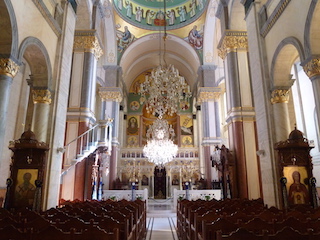 | |
Larnaka – Pafos – Polis – Girne/Kyrenia – Dipkarpaz – Gazimagusa/Famagusta – Ayia Napa – Larnaka
| |
| |
| A very convincing sales pitch at the St. Gallen travel fair put Cyprus on our to-do list. Temperatures of 25°C, ancient Roman ruins and a promise of bicycle-friendly roads was all the persuasion we needed! Direct flights with Easy Jet from Basel to Larnaka clenched the deal. | |
 Arid southern coast | The south coast, while very arid in October, did offer a number of attractions in the form of Roman and Greek historical sites, including Aphrodite’s birthplace and numerous well-preserved mosaics, as well as quaint stone villages and welcoming taverns. |
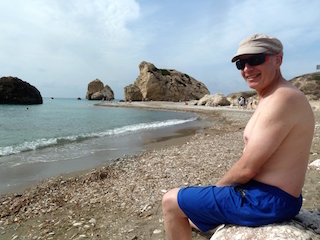 Aphrodite’s birthplace |  Local tavern |
 Kourion Roman ruins | 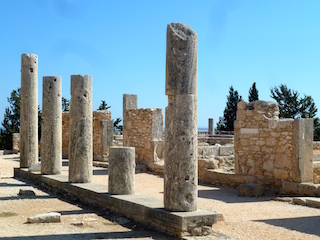 Sanctuary of Apollon |
 Grapefruit |  Bananas |
| Pafos is a must see for history buffs, with plenty of ruins and mosaics dating back to the 3rd century AD. Its harbour is a wonderful place for a stroll and some people watching. |  Pafos amphitheatre |
| |
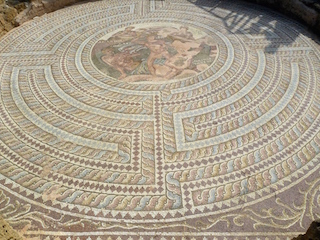 Pafos mosaics Pafos mosaics | 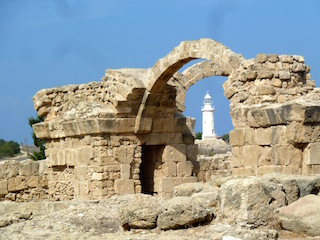 Roman ruins |
 Coastal road north of Pafos |  Quiet inland country road |
 British army base in Cyprus | Cyprus was occupied by the British from 1878 to 1960. The remnants of this colonial era are still evident with English spoken widely, two British naval bases and thousands of British soldiers, expats and holiday makers enjoying their full English breakfasts and Sunday roasts. In some places, they even seem to outnumber the locals. |
| From a political standpoint, Cyprus has a very unusual constellation. When the British left, Greek Cypriots were in favour of joining Greece, while the Turkish Cypriots (20% of the population) had other ideas. A Greek coup in 1974 led to a Turkish invasion that has resulted in an unofficial state called the Turkish Republic of Northern Cyprus accounting for about a third of the island. | 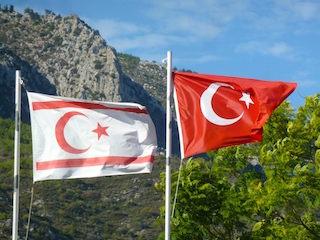 Turkish flags in northern Cyprus |
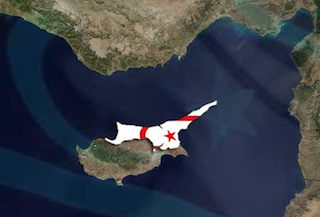 How Cyprus is split | The border is now open, but Euros are used down south, while Turkish Lira is the currency in the north, where you’re more likely to hear Merhaba than Yassou! Passports have to be shown, but the stamp goes on a slip of paper that is retained on exit. The two halves are still buffered by UN peacekeeping troops, although everything seems quiet enough 40 years later. |
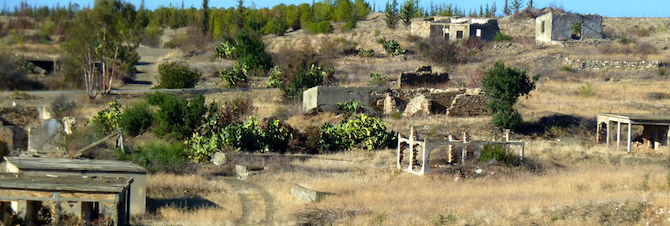 Deserted village near the border; a remnant of the Turkish invasion | |
 |  |
| Girne/Kyrenia is reputedly one of the most scenic harbours in the Mediterranean and we are not going to dispute the claim! A medieval castle, old town and mountainous backdrop do add a touch of class. | 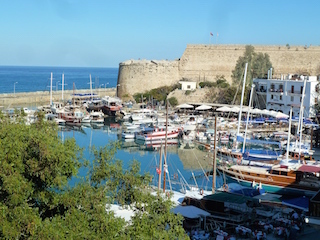 Girne/Kyrenia harbour |
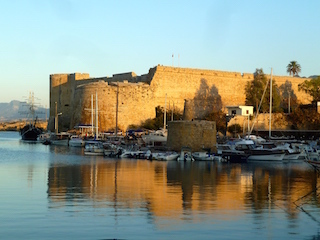 | 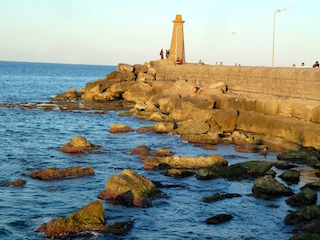 |
 Bellapais monastery | 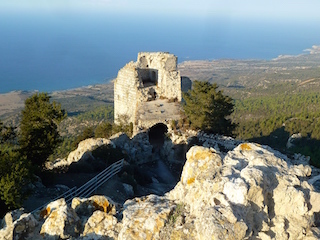 Kantara castle |
 Kaplica area | Our favourite stretch of the island loop was from Girne out to the Karpasia pan handle, which offered much more in the line of trees and greenery, with beautiful little coves, golden sand beaches, a brand new road and hardly any traffic. |
 Sunrise on Golden Beach, Karpasia | 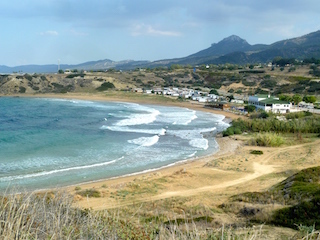 Kaplica |
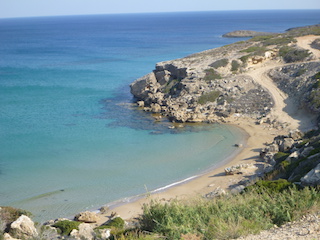 Beautiful coves on the north coast | 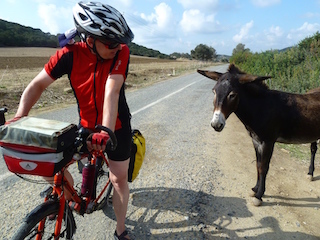 Stray donkeys abound in Karpasia |
| While Northern Cyprus is predominantly muslim, there are a few Orthodox Cypriots in the Karpasia area keeping their faith alongside their Islamic neighbours. | 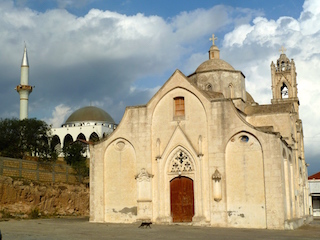 Orthodox church & mosque |
 |  |
Off-season means you often have the resort to yourself! | |
| We bumped into numerous expats and locals en route, each with a fascinating story to tell. One of these was Peter Moore, an Englishman living in Cyprus, who has written a personal account of how the Turkish invasion of 1974 impacted his family. His captivating, vivid story (Days we have seen) made our visit to Famagusta all the more interesting, as we tried to retrace some of their footsteps and picture the scene 40 years ago. | 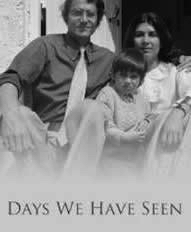 |
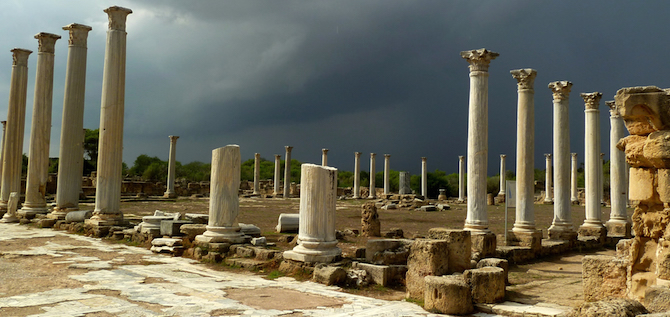 Sálamis outside Famagusta | |
 | 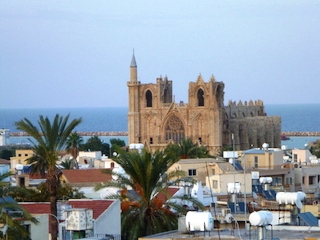 |
Famagusta/Gazimagusa cathedral converted into a mosque in 1571 | |
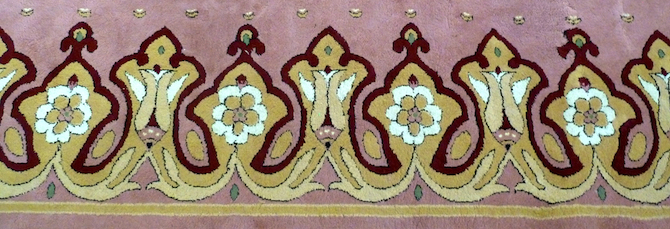 Carpet design in mosque | |
| Places like Varosha left little to the imagination. In 1974, this beach suburb of 40,000 inhabitants was a stretch of booming high-rise hotels as far as the eye could see. | |
 Varosha ghost town, Famagusta | When the war broke out, tourists and local residents fled leaving their belongings behind in the hope they could return again some day. However, the whole area has been fenced off under Turkish occupation ever since, and the abandoned hotels have gone to rack and ruin like a ghost town. Sunset, barbed wire and military lookout towers all contributed to a real eerie scene of poignancy and futility. |
 Probably the best-known holiday town in Cyprus nowadays is Ayia Napa. We went, saw and quickly left! | |
 Larnaka Cypriotic Orthodox church |
Larnaka Cypriotic Orthodox church |
 Mind the cyclist! | As a cycling destination, Cyprus does have a lot to offer. The roads are generally good and traffic is not an issue. |
| Souvlaki, fresh fish and mezze all contribute favourably to satisfying a hungry cyclist’s appetite. Breakfast included feta cheese, halloumi (local squeeky cheese made from a mix of sheep and goat’s milk), olives, tomatoes, cucumber, jams and bread. | 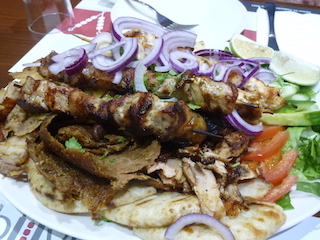 Souvlaki |
 Mezze |  Breakfast |
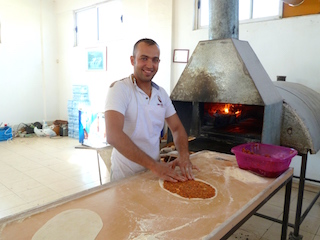 Lahmacun (Turkish pizza) chef | Both locals and ex-pats are exceptionally friendly and chatty, making for some very entertaining breaks en route. A common theme unfortunately, is a sense of disillusionment with the on-going political uncertainty, for which no one had the perfect solution. |
| |
| The only negative point we encountered was an abundance of rubbish on the beaches and roadsides that did tend to mar our otherwise positive experience of this, the third largest, Mediterranean island. | 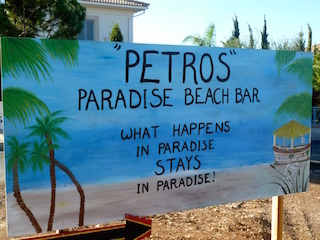 |


